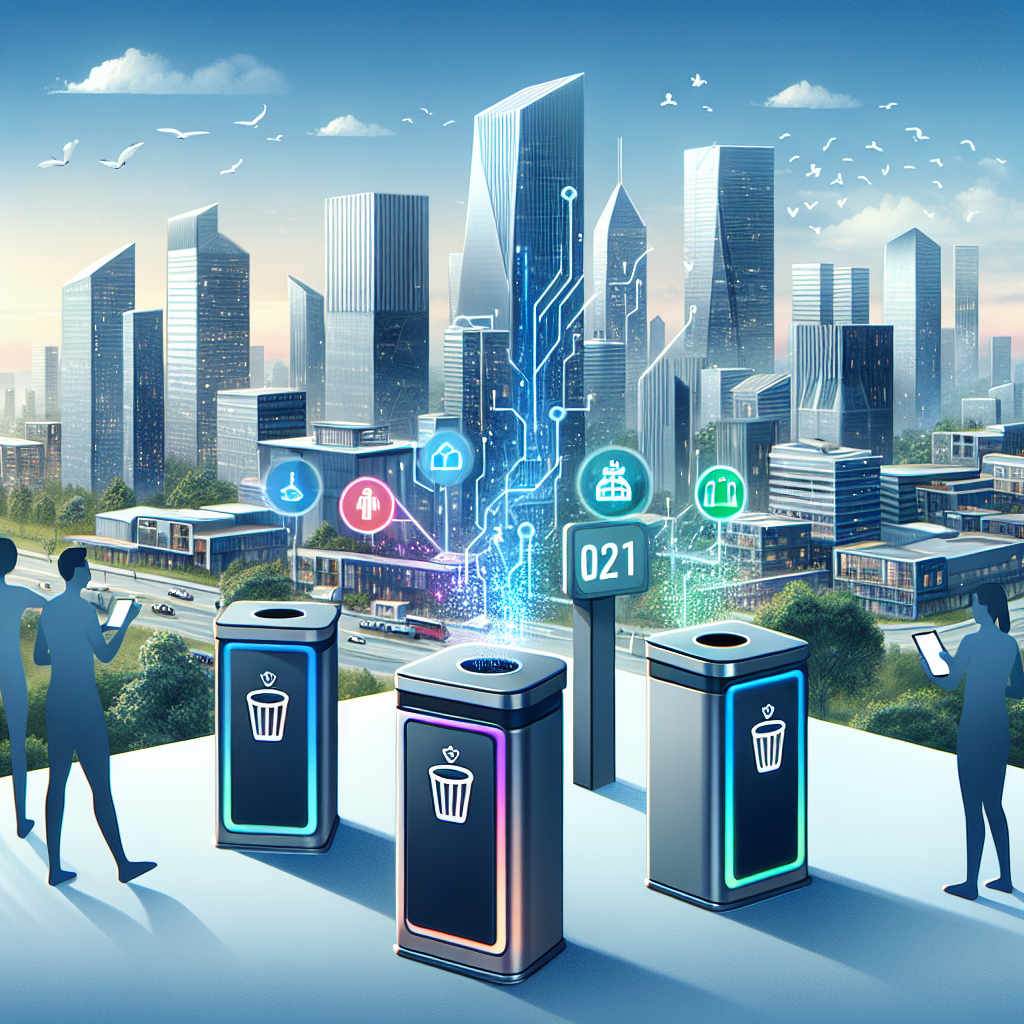Discover how smart sensors are revolutionizing valet trash services, enhancing efficiency and convenience for residents and property managers alike. Embrace the future of waste management today! Learn more.
Revolutionizing Waste Management: The Role of Smart Sensors in Valet Trash Services
In recent years, the integration of smart technology into various sectors has revolutionized traditional practices, and the waste management industry is no exception. Among the innovative solutions emerging in this field, smart sensors have begun to play a pivotal role in transforming valet trash services. These advanced devices are not only enhancing operational efficiency but also contributing to environmental sustainability and improved customer satisfaction.
To begin with, smart sensors are fundamentally changing how valet trash services operate by providing real-time data on waste levels. Traditionally, valet trash services relied on fixed schedules for waste collection, which often led to inefficiencies such as overflowing bins or unnecessary pickups. However, with the advent of smart sensors, these services can now monitor the fill levels of trash containers continuously. This real-time monitoring allows service providers to optimize collection routes and schedules, ensuring that waste is collected only when necessary. Consequently, this leads to a reduction in fuel consumption and operational costs, as well as a decrease in the carbon footprint associated with waste collection vehicles.
Moreover, the data collected by smart sensors can be analyzed to gain valuable insights into waste generation patterns. By understanding these patterns, valet trash services can tailor their operations to better meet the needs of specific communities or residential complexes. For instance, if data indicates that certain areas produce more waste during specific times of the week, services can adjust their schedules accordingly to accommodate these fluctuations. This level of customization not only enhances the efficiency of waste collection but also improves the overall service quality experienced by residents.
In addition to operational benefits, smart sensors contribute significantly to environmental sustainability. By optimizing waste collection processes, these sensors help reduce the number of trips made by collection vehicles, thereby lowering greenhouse gas emissions. Furthermore, the data-driven approach facilitated by smart sensors encourages better waste segregation and recycling practices. When residents are aware that their waste generation is being monitored, they are more likely to engage in responsible disposal behaviors, such as separating recyclables from general waste. This shift towards more sustainable practices aligns with broader environmental goals and helps communities reduce their ecological impact.
Another noteworthy advantage of smart sensors in valet trash services is the enhancement of customer satisfaction. With more efficient and reliable waste collection, residents experience fewer instances of overflowing bins or missed pickups, which are common complaints in traditional waste management systems. Additionally, the transparency provided by data analytics allows service providers to communicate more effectively with their clients, offering insights into waste management practices and demonstrating a commitment to continuous improvement. This transparency fosters trust and strengthens the relationship between service providers and their customers.
In conclusion, the integration of smart sensors into valet trash services marks a significant advancement in the field of waste management. By enabling real-time monitoring, optimizing collection processes, and promoting sustainable practices, these sensors are revolutionizing how waste is managed in residential settings. As technology continues to evolve, it is likely that the role of smart sensors will expand further, offering even more innovative solutions to the challenges faced by the waste management industry. Ultimately, the adoption of smart sensors represents a forward-thinking approach that not only enhances operational efficiency but also contributes to a more sustainable and customer-centric waste management system.
Enhancing Efficiency: How Automation and Real-Time Monitoring Improve Valet Trash Services
Valet trash services, a convenient amenity for many residential communities, have traditionally relied on manual processes to collect and dispose of waste. However, the integration of smart sensors and automation is revolutionizing this industry, enhancing efficiency and improving service quality. By leveraging advanced technologies, valet trash services are now able to optimize their operations, reduce costs, and provide a more reliable service to residents.
At the core of this transformation are smart sensors, which are being deployed to monitor waste levels in real-time. These sensors, often installed in trash bins or compactors, provide valuable data on the volume and type of waste being generated. This information allows service providers to make informed decisions about collection schedules, ensuring that bins are emptied only when necessary. Consequently, this reduces the frequency of collections, leading to lower operational costs and a decrease in the carbon footprint associated with waste transportation.
Moreover, the data collected by smart sensors can be analyzed to identify patterns and trends in waste generation. This analysis enables service providers to anticipate peak times and adjust their resources accordingly. For instance, during holiday seasons or community events, waste production may increase significantly. By predicting these fluctuations, valet trash services can allocate additional resources to manage the increased demand, thereby maintaining a high level of service without overextending their capabilities.
In addition to optimizing collection schedules, smart sensors also play a crucial role in enhancing the overall efficiency of valet trash services through automation. Automated systems can be programmed to trigger alerts when bins reach a certain capacity, prompting immediate action from service personnel. This proactive approach minimizes the risk of overflow and ensures that waste is collected in a timely manner, enhancing the cleanliness and hygiene of residential communities.
Furthermore, the integration of smart sensors with mobile applications and cloud-based platforms facilitates seamless communication between service providers and residents. Residents can receive notifications about collection times, report issues, or request additional services through user-friendly apps. This level of transparency and communication fosters a sense of trust and satisfaction among residents, as they are kept informed and can easily engage with service providers.
The benefits of smart sensors extend beyond operational efficiency and customer satisfaction. By providing detailed insights into waste composition, these technologies support sustainability initiatives. Service providers can identify opportunities for recycling and waste reduction, contributing to environmental conservation efforts. For example, if data indicates a high volume of recyclable materials being disposed of as general waste, educational campaigns can be launched to encourage residents to separate recyclables more effectively.
In conclusion, the integration of smart sensors and automation in valet trash services is transforming the industry by enhancing efficiency, reducing costs, and improving service quality. Through real-time monitoring and data analysis, service providers can optimize their operations, anticipate demand fluctuations, and maintain high standards of cleanliness and hygiene. Additionally, the seamless communication facilitated by these technologies fosters trust and satisfaction among residents, while also supporting sustainability initiatives. As the adoption of smart sensors continues to grow, the future of valet trash services looks promising, with the potential for even greater advancements in efficiency and environmental responsibility.
Tech-Driven Waste Solutions: The Impact of Smart Sensors on Modern Valet Trash Operations
In recent years, the integration of smart technology into various sectors has revolutionized traditional operations, and the waste management industry is no exception. Among the most notable advancements is the use of smart sensors in valet trash services, which are increasingly being recognized for their potential to enhance efficiency, reduce costs, and improve customer satisfaction. As urban areas continue to expand and the demand for convenient waste disposal solutions grows, smart sensors are playing a pivotal role in transforming how valet trash services operate.
To begin with, smart sensors are instrumental in optimizing the collection process. Traditionally, valet trash services relied on fixed schedules for waste collection, which often led to inefficiencies such as collecting bins that were not full or missing those that were overflowing. Smart sensors, however, provide real-time data on the fill levels of trash bins, allowing service providers to adjust their collection routes and schedules dynamically. This data-driven approach ensures that resources are allocated more effectively, reducing unnecessary trips and minimizing fuel consumption. Consequently, this not only lowers operational costs but also contributes to a reduction in the carbon footprint of waste management activities.
Moreover, the implementation of smart sensors enhances the overall customer experience. Residents benefit from more reliable and timely trash collection services, as the sensors enable service providers to respond promptly to any issues such as overfilled bins or missed pickups. Additionally, the data collected by these sensors can be used to generate insights into waste generation patterns, allowing property managers to tailor services to better meet the needs of their communities. For instance, if data indicates that certain areas consistently produce more waste, additional resources can be allocated to those areas to prevent overflow and maintain cleanliness.
Furthermore, smart sensors contribute to improved accountability and transparency in valet trash operations. With the ability to monitor and record the status of each bin, service providers can offer detailed reports to property managers and residents, demonstrating their commitment to efficient and effective waste management. This transparency fosters trust and satisfaction among clients, as they can be assured that their waste is being handled responsibly. Additionally, in the event of disputes or complaints, the data provided by smart sensors serves as an objective record that can be used to resolve issues swiftly and fairly.
In addition to operational benefits, the adoption of smart sensors in valet trash services aligns with broader environmental sustainability goals. By optimizing collection routes and reducing unnecessary trips, these sensors help decrease greenhouse gas emissions associated with waste transportation. Moreover, the insights gained from sensor data can inform waste reduction strategies, such as identifying opportunities for recycling or composting, thereby promoting more sustainable waste management practices.
In conclusion, the integration of smart sensors into valet trash services represents a significant advancement in the field of waste management. By enhancing efficiency, improving customer satisfaction, and supporting sustainability efforts, these sensors are transforming traditional operations and setting new standards for service delivery. As technology continues to evolve, it is likely that the role of smart sensors in valet trash services will expand further, offering even greater benefits to service providers, residents, and the environment alike. The future of waste management is undoubtedly being shaped by these innovative solutions, paving the way for smarter, more sustainable urban living.



